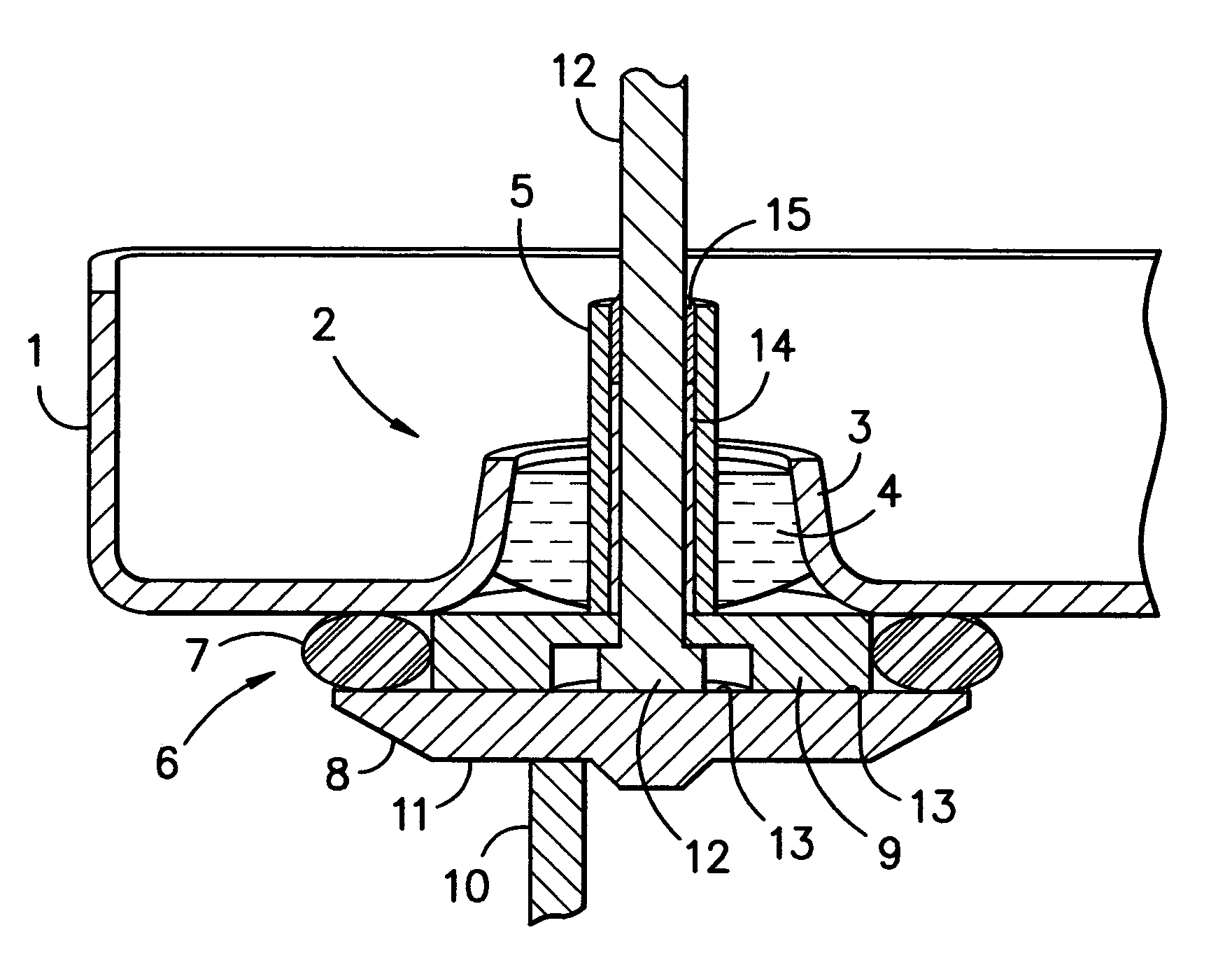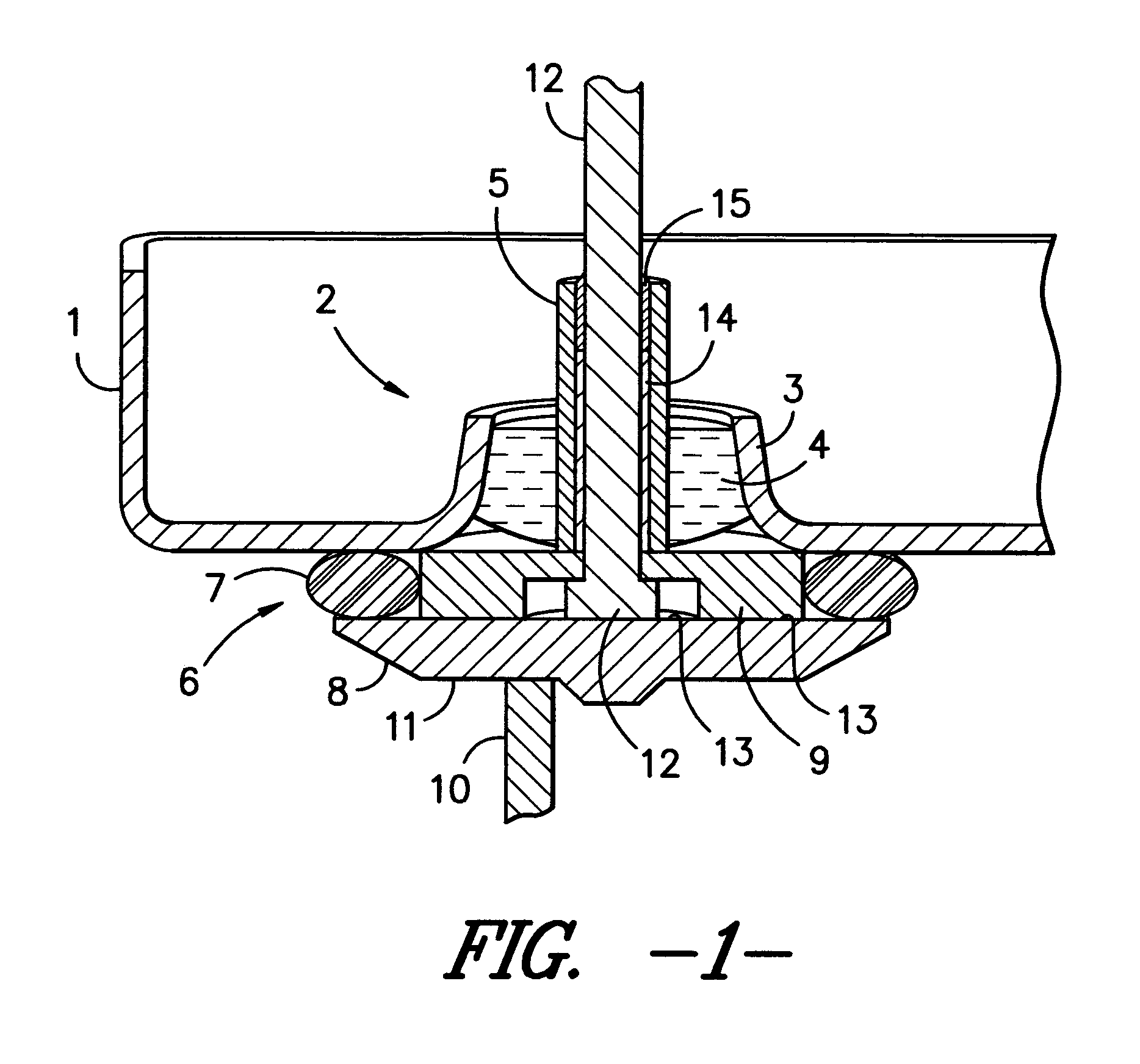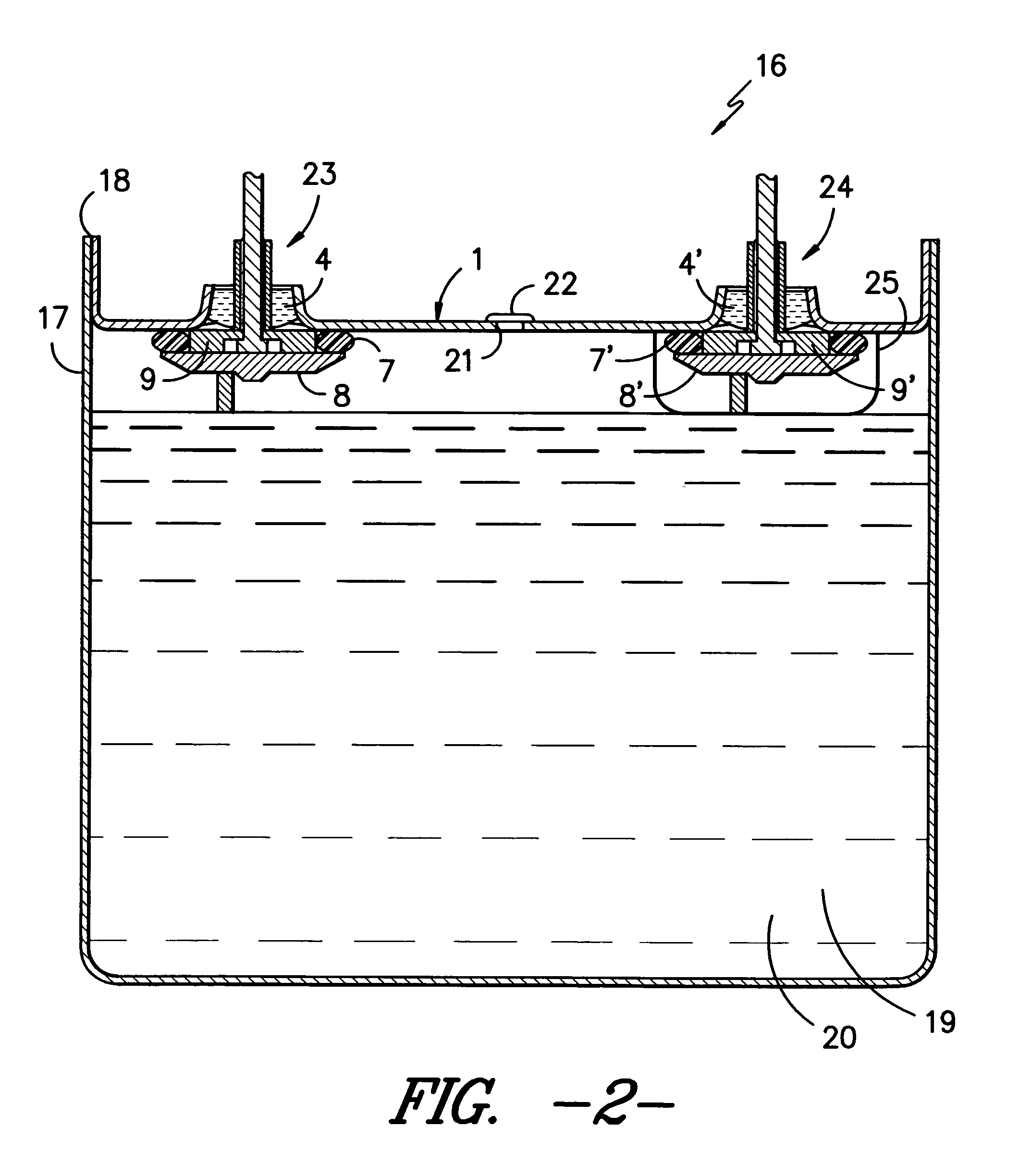Hermetically sealed electrolytic capacitor
a capacitor and hermetically sealed technology, applied in the field of electrolytic capacitors, can solve the problems of inconvenient use, leakage around conventional non-hermetically sealed, aluminum to glass seals, etc., and achieve the effect of increasing the surface area and enhancing the performance of the capacitor
- Summary
- Abstract
- Description
- Claims
- Application Information
AI Technical Summary
Benefits of technology
Problems solved by technology
Method used
Image
Examples
Embodiment Construction
[0037]Without limiting the scope of the invention, the preferred embodiments and features are hereinafter set forth. All of the United States patents, which are cited in the specification, are hereby incorporated by reference. Unless otherwise indicated, conditions are 25° C., 1 atmosphere of pressure and 50% relative humidity.
[0038]Referring to FIG. 1, lid 1 contains an integrally formed metal-glass-metal hermetic seal 2. Hermetic seal is formed by the upturned portion of lid 3, annular glass 4 and a metal post, which in the embodiment shown is hollow tube 5. Liquid seal 6 is formed by elastomeric ring 7 compressed between terminal plate 8 and the underside of lid 1. Bushing 9 is positioned inside elastomeric ring 7, and acts to center elastomeric ring 7 relative to hermetic seal 2, as well fixing the distance between terminal plate 8 and lid 1.
[0039]Terminal plate 8 is electrically connected to the anode or cathode of the capacitor element by lead 10 on the wet side 11 of terminal...
PUM
 Login to View More
Login to View More Abstract
Description
Claims
Application Information
 Login to View More
Login to View More - R&D
- Intellectual Property
- Life Sciences
- Materials
- Tech Scout
- Unparalleled Data Quality
- Higher Quality Content
- 60% Fewer Hallucinations
Browse by: Latest US Patents, China's latest patents, Technical Efficacy Thesaurus, Application Domain, Technology Topic, Popular Technical Reports.
© 2025 PatSnap. All rights reserved.Legal|Privacy policy|Modern Slavery Act Transparency Statement|Sitemap|About US| Contact US: help@patsnap.com



